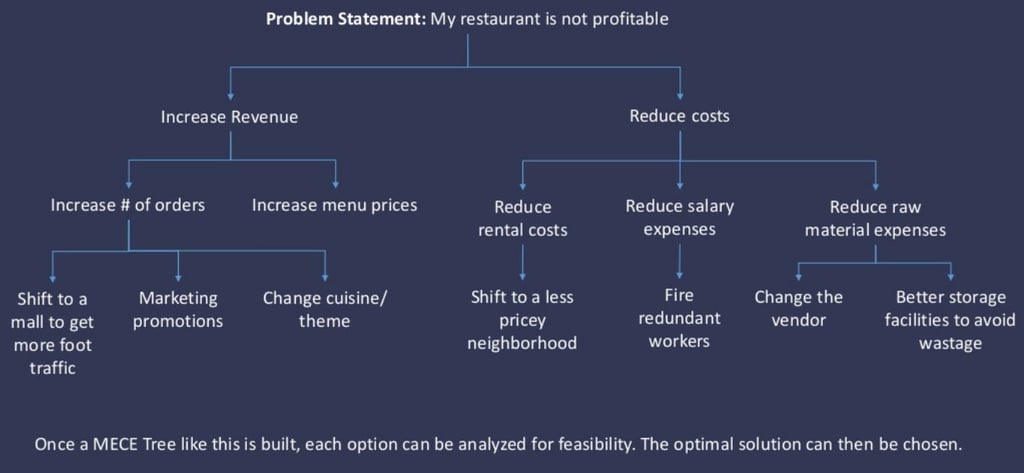MECE: The Framework Behind Every Great Business Decision
How “Mutually Exclusive, Collectively Exhaustive" Became the Backbone of Clear Thinking
2 min read


Some frameworks look good on paper. MECE works in practice. Every single time.
In consulting rooms, strategy war rooms, and boardroom whiteboards, the acronym MECE — Mutually Exclusive, Collectively Exhaustive — doesn’t just appear. It anchors. It shapes how we structure chaos into clarity. It separates amateur problem-solving from professional-grade logic.
And in 2025, when decisions must be made faster, communicated cleaner, and defended better — MECE isn’t a luxury. It’s survival.
Let’s rewind.
Imagine you’re analyzing why sales are dropping for a product. Without MECE, you might say: “Maybe it's marketing, or pricing, or the economy, or maybe customers don’t like it anymore.”
Vague. Overlapping. Scattered.
Now bring in MECE.
You split the causes into four big buckets: Marketing Channels (Online, Offline), Product-Related Factors (Packaging, Pricing), Sales Execution (Strategy, Team), and Market Conditions (Competition, Economy). Each is distinct — no overlaps. Together, they cover all that matters — no gaps.
That’s the power of MECE. It makes your thinking tighter, your questions sharper, and your presentations bulletproof.
MECE is not a slide. It’s a way of thinking.
It forces you to ask: Am I missing something? Am I repeating myself? Am I seeing the whole picture?
And when you get it right, you don’t just sound smarter. You become more persuasive.
Consultants love MECE because it helps dissect problems. But founders, product leads, and marketers should love it too — because it helps solve them.
Launching a new product? Use MECE to break down risks: Market Risk, Product Risk, Operational Risk, Financial Risk.
Diagnosing churn? Use MECE to separate it into: User Experience Issues, Pricing Issues, External Market Changes, and Customer Support Gaps.
Even personal decisions — Should I move to a new city? Should I switch careers? — get clearer with MECE.
But here’s the catch: MECE isn’t about listing everything. It’s about structuring ideas smartly.
Too often, people confuse “list-making” with “problem-solving.” MECE doesn’t ask you to brainstorm harder. It asks you to group better.
So how do you practice MECE?
Start with buckets, not bullets. Instead of 10 random points, ask: what 3-4 themes do these fall under?
Always test your structure. Ask: is there any overlap? Is there any blind spot?
Visualize it. Draw a tree. If any branch overlaps or breaks, it’s not MECE.
Don’t chase perfection. The goal is usefulness, not obsession.
Because MECE isn’t just for case interviews. It’s for clarity. And in a world flooded with opinions, clarity is the most underpriced currency.
So next time you face a messy business problem — step back. Think MECE. Group right. And solve better.
Because strategy isn’t about thinking more. It’s about thinking clean.
